
 |
The following members began a three-year term on the Board effective January 1, 2001. Abbreviated biographies of these gentlemen are shown below.
 |
Henry Benitez is an EMC Laboratory Manager at Intel Corporation in Hillsboro, Oregon. He received a BSEE electrical engineering degree from the University of Portland and is a NARTE Certified EMC Engineer. He has over 20 years experience in the field of EMC. He is Chairman of the IEEE Oregon Chapter of the EMC Society and is presenting serving his first term on the Board of Directors for the IEEE EMC Society. He has taken responsibilities as IEEE EMCS Public Relations Chair and Awards Chair. He is a contributor to the IEEE Standards Advisory and Coordination Committee (SACCom). He has been an active member of the Information Technology Industry Council (ITI) TC-5 EMC committee. He has participated in ECMA TC 20, ANSI C63, CISPR B US TAG, and IEC US TAG EMC committees. He participated as a member of the ANSI U.S. technical delegation chartered to discuss mutual recognition agreements with the European Commission. He contributed to the development of IEC61326 (EN61326) product family standard for control, measurement, and laboratory equipment via the joint TC 66 WG1/SC65 WG4 international committee. Mr. Benitez has published numerous EMC papers in engineering magazines, IEEE publications, and EMC conference records since 1984. He has presented papers at EMC conferences throughout the world. Mr. Benitez was awarded an IEEE Millennium Medal for his contributions to the Oregon IEEE Section.
 |
Bruce Crain was born in Pittsburgh, Pennsylvania, where he received the BS degree in Electrical Engineering from Carnegie Mellon University in 1984. In 1989, he received the MS degree in Electrical Engineering from Florida Institute of Technology in Melbourne, Florida. In 1998, he received the Ph.D. in Electrical Engineering from the Georgia Institute of Technology in Atlanta, Georgia. Dr. Crain is currently with Northrop Grumman Corporation in Melbourne, Florida, where he is the technical lead of the Electromagnetic Environmental Effects (E3) group. During his 15-year career in the EMC field, Dr. Crain has worked for several aerospace companies in addition to Northrop Grumman, including Lockheed Martin in Marietta, Georgia, Harris in Melbourne, Florida, Alenia Spazio in Turin, Italy, and Matra Marconi Space in Tolouse, France. Dr. Crain's primary technical interests are EMI design of aerospace hardware, EMC design of aerospace vehicles, and protection of aerospace vehicles against external electromagnetic threats such as lightning and HIRF. His current interests are computational electromagnetic methods for electromagnetic analysis of aerospace platforms. Dr. Crain has been a member of IEEE for 16 years and currently holds the grade of Senior Member. He recently started a new chapter of the EMC Society in Melbourne, Florida, and holds the office of Chairman. He served as the Chairman of the EMC Society Chapter in Atlanta during 1996-1998, and was the Publicity Chairman for the 1995 IEEE International Symposium on EMC in Atlanta. Dr. Crain is a NARTE certified EMC engineer and is registered as a Professional Engineer in the states of Florida and Georgia. Dr. Crain has been authorized by the FAA to act as a Designated Engineering Representative (DER) in the areas of EMI/EMC, HIRF and Lightning.
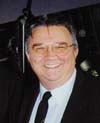 |
Richard (Dick) Ford, NCE, is the owner and principal engineer of 4D Associates, Inc. He received his BSEE from Northeastern University, Boston, MA, USA in 1964 and undertook post graduate work at Virginia Polytechnic Institute, American University, BYU and University of Colorado.
Dick Ford has over 30 years experience in the EMC fields. Over his nearly 40 year's professional experience, he's been employed at MIT's Draper Lab, Sylvania, GE, Interference Control Technologies, the Navy's Surface Weapon's Center/ Dahlgren and the Naval Research Laboratory where he currently works part time as an annuitant. In 1973 he co-founded the US Navy's Shipboard EMC Improvement Program (SEMCIP) which by 1983 had grown to be the US DoD's largest and most successful EMI Fix-It program. He was a Congressional Fellow assigned as military technology advisor to Senator Hatch in 1982-83 where he contributed a key background paper on the EMP aspects of the movie "The Day After" when it received US Congressional Review. In 1983-84 he was Technical Editor of EMCT, at the time, our industry's world leading bi-monthly magazine (70,000 circulation). He has taught EMC to about a thousand students in commercial and government sponsored short courses both nationally and internationally since 1983. After retiring from NRL in 1998, he formed his own company and continues to work as an EMC consulting technologist. He holds two US patents on EMC measurement technology. He's a certified EMC Engineer (NARTE - 1989 to present). His hobbies are solar energy and carpentry. Mr. Ford has been an IEEE member for over thirty years. He's been an EMC Society BoD member/officer/committee chair continuously since 1986. He was EMCS BOD Treasurer from 1986 to 1994, EMC Society Photographer from 1994 to present, Liaison to the IEEE USA's R&D Policy Committee from 1991 to present, Chair of the Society's Survey & Analysis Committee from 1994 to present, and 2000 IEEE International Symposium on EMC committee member and treasurer from 1999 to present. He received several EMC Society Awards including the Laurence G. Cumming Award 1992 and Honorary EMCS Life Member 1994. He's a strong proponent of the Society's international out-reach initiatives, as well as the Institute's national initiatives both in the US and, in the future, worldwide (based on the experiences of IEEE/USA). He's voted for more open and democratic processes with the Society's BoD and specifically feels that the Society's president-elect should be directly elected by the Society members.
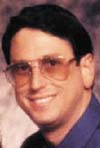 |
Mark I. Montrose, S'72-M'79-SM'93, graduated from California Polytechnic State University, San Luis Obispo, California with a Bachelor of Science Degree in Electrical Engineering and a Bachelor of Science Degree in Computer Science, both in 1979. He received a Master of Science Degree in Engineering Management from the University of Santa Clara, Santa Clara, California in 1983. Mr. Montrose is the owner of Montrose Compliance Services, Inc., specializing in international regulatory compliance with an emphasis on applied EMC engineering, printed circuit board design and layout, signal integrity and product safety. Technical and professional experience includes over 20 years of applied EMC engineering and consulting. This involves extensive design, test, and certification of Information Technology Equipment plus Industrial, Scientific and Medical products, both at the system and component level. Before becoming a consultant, Mr. Montrose was the principal EMC engineer and manager of regulatory compliance departments at Whittaker Communications, Hughes LAN Systems, MIPS Computer Systems, Alcatel Information Systems, Corvus Systems, and ZILOG. He is assessed by a European Competent Body as an EMC laboratory for in-situ CE approvals to the EMC Directive, and is also accredited as a test laboratory by NARTE. Currently, he is an adjunct professor for the University of Wisconsin (Madison) in addition to a professional training organization located in Hong Kong, Malaysia and Singapore. He is a certified instructor, accredited by the Council for Private Postsecondary and Vocational Education in California, presenting EMC seminars internationally for client companies. Mr. Montrose is the author of two best selling EMC books published by IEEE Press, Printed Circuit Board Design Techniques for EMC Compliance–A Handbook for Designers, 1st ed.–1996/ 2nd ed.–2000, and EMC and the Printed Circuit Board–Design, Theory and Layout Made Simple, 1999. Both books are sponsored by the IEEE EMC Society. In addition, he is a contributing author to The Electronic Packaging Handbook, 2000, co-published by CRC and IEEE Press. Mr. Montrose's professional affiliations and activities include being a current member of the IEEE EMC Society Board of Directors, a Senior Member of the IEEE EMC Society, a Distinguished Lecturer of the Society, IEEE Press Liaison, and member of the dB Society. He is affiliated with TC-4 (EMI Control), TC-8 (Product Safety Technical Committee) and is an officer in the Santa Clara Valley Product Safety Chapter. He has received the EMC Society's Certificate of Achievement for outstanding contribution to the international arena of EMC, based upon his educational activities and technical publications. He is on the editorial review board for the ITEM publication and is a frequent contributor to the EMC Society's Newsletter in addition to other professional publications. Mr. Montrose is a life member of the American Radio Relay League (ARRL) with the Amateur Extra Class license of K6WJ. Professional activities include promoting EMC education using a simplified approach, performing EMC research on PCB layout techniques, presenting technical papers on various aspects of EMC, and conducting demonstrations related to hands-on, applied EMC engineering, including signal integrity, at IEEE International EMC Symposiums, Conferences and Colloquiums in North America, Europe and Asia. In 1991 and 1994, Mr. Montrose was co-chairman of the technical program session at the Santa Clara Valley EMC Colloquiums.
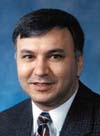 |
James P. Muccioli is Senior Vice-President of Technology & Testing at X2Y Attenuators, LLC. He received his bachelor's and master's degrees in electrical engineering from the University of Michigan. Mr. Muccioli is a NARTE certified EMC and ESD engineer. His background includes 18 years of specialized EMC systems experience at X2Y Attenuators, Daimler-Chrysler, and United Technologies. He is an active member of the SAE J-1113 and J-551 EMC committees and is chairman of the SAE Integrated Circuit EMC Task Force. He has co-authored articles published in the IEEE Transactions on Electromagnetic Compatibility ("The Electromagnetic Environment of an Automobile Electronic System," August 1987, and "Measuring the Radiated Emissions From a Family of Microprocessors Using a 1-GHz TEM Cell," May 1999). Other published papers were included in the 1990 IEEE International Symposium on Electromagnetic Compatibility ("Radiated Emissions of Very Large Scale Integrated Circuits") and the 1991 IEEE International Symposium on Electromagnetic Compatibility ("An Electromagnetic Immunity Diagnostic Tool for Electronic Circuits"). Mr. Muccioli is inventor or co-inventor of seventeen granted U.S. and international patents and is inventor or co-inventor of many other pending patent applications. Mr. Muccioli was a contributing author ("Part 6: Electromagnetic Interference and Compatibility") for the Automotive Electronics Handbook (Ronald Jurgen, Editor-in-Chief, McGraw-Hill, Inc., 1995, 1999). He taught an undergraduate course ("Noise Reduction Techniques") at Lawrence Technological University and the University of Michigan. He also teaches continuing education seminars in EMC through his firm Jastech EMC Consulting, LLC. Mr. Muccioli was a member of the Board of Directors of the IEEE EMC Society (1993-1998) and was selected as an IEEE Fellow in 1998 for contributions to integrated circuit design practices to minimize electromagnetic interference. He served as EMC Society Technical Services Chairperson for Student Activities (1990-1996) and Vice-Chairperson of the Education Committee (1993-1996).
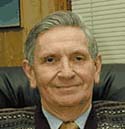 |
Henry W. Ott is President of Henry Ott Consultants, an EMC training and consulting organization. Prior to starting his own consulting company, he was with AT&T Bell Laboratories, Whippany, New Jersey, for 30 years, where he was a Distinguished Member of the Technical Staff. At Bell Labs, he worked on projects relating to missile guidance systems, nuclear effects instrumentation, analog and digital tape recorders, telephone transmission and signaling systems, microprocessors, and acted as a consultant on Electromagnetic Compatibility. He is the author of the book Noise Reduction Techniques in Electronic Systems, published in 1976 and 1988, by Wiley Interscience. The first edition was translated into Japanese, Russian, Bulgarian, and Polish, and the second edition has been translated into Italian and Japanese. Mr. Ott is a Fellow of the IEEE. He is Vice President-Symposia/Conferences of the IEEE EMC Society. He is also a member of the ESD Association and is a NARTE certified Electrostatic Discharge Control Engineer. He also holds an amateur radio operator's license with the call sign WA2IRQ. Mr. Ott is the holder of four patents, and author of numerous technical papers. He is a past Distinguished Lecturer for the EMC Society, and lectures widely on the subject of EMC. He received his BSEE degree from New Jersey Institute of Technology in 1957, and his MSEE degree from New York University in 1963.
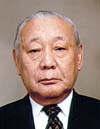 |
Professor Takeo Yoshino received his B.E degree in 1953 from the University of Electro-Communications (U.E.C.), Tokyo, Japan. In 1953, he joined the Department of Electronic Engineering of the U.E.C. Since 1973, he was a Professor of the Department and the Graduate school of UEC. He retired from UEC in 1995 and joined the Fukui University of Technology as the Professor of their Graduate School. Since 1970 he has been the Director of Sugadaira Space Radio Observatory of U.E.C., and he was concurrently professor and research contractor of the Institute of Space and Aeronautic Science (ISAS), National Institute of Polar Research (NIPR) and the Nobeyama Radio Observatory of the National Astronomical Agency until his retirement. From 1958 to 1960, he stayed at Syowa Station in Antarctica as a wintering party member of the third Japanese Antarctic Research Expedition, and from 1975 to 1977, he was at Syowa Station again as the leader of the 17th Expedition. In Antarctica, his main field of interest was the analysis and investigation of the auroral phenomena by the natural VLF radio wave emissions observed by the ground, rockets and satellites. His research interests are as follows: The investigation of emission mechanism of electrostatic ion-cyclotron waves and VLF auroral hiss over auroral oval by satellite observations, the observation study of earthquakes and volcano eruptions by means of the seismogenic emission phenomena, the bio-effects of radio emission phenomena and VDT in EMC fields, and the observation and development of burst VLBI system in the millimeter band radio astronomy. Professor Yoshino received the IEEE-AP Best Paper Award in 1967, and a Distinguished Service Award on EMC from the Polish EMC Symposium in 1992. He is a member of IEIEC, SGEPSS and ASJ (Japan), IEEE and AGU (USA), URSI, IAGA and COSPAR, an advisory board member of the Zurich EMC Symposium, the Wroclaw EMC Symposium, and the Lowell Observatory.
 |
Carlos A. F. Sartori was born in Botucatu, State of São Paulo, Brazil, on January 5th, 1959. He received the B.Sc., M.Sc., and the Ph.D. degrees from Escola Politécnica of University of São Paulo (EPUSP), in 1983, 1994, and 1999, respectively, each in Electrical Engineering. From 1982 to 1984, he worked at Main Eng. S.A., a consulting engineering company, where he was introduced to some aspects of electromagnetic compatibility related to transmission line designs. In 1984, he joined the National Commission on Nuclear Energy CNEN/IPEN-SP, and, in cooperation with the Brazilian Navy Research Institute in São Paulo CTMSP, since 1991, he has been the technical person responsible for the CTMSP EMC Group. After 10 years working as an engineer, he started teaching. Thus, although in different subjects and at different educational levels, he followed a familiar tradition; where many of the members of his family are teachers, including his parents who are retired high school teachers and his sister that is a professor at a medical school at the São Paulo State University. Concerning his academic life, he has been a lecturer and a researcher at the Postgraduate Program of the Department of Energy and Automation Engineering of the Escola Politécnica since 1991, and since 1999 an invited Professor, where he teaches Electromagnetic Compatibility. He is also an Assistant Professor at the Catholic University of São Paulo where he held a position as a Member of the Council, and he was the Vice-head of the Department of Electrical Engineering in 1997 and 1998. At Catholic University of São Paulo, he teaches Electromagnetism and Principles of Communication. In 1994, he received the Best M.Sc. Work Award from EPUSP and, in the same year, due to his academic performance, the "Unibanco Award." He is involved with many EMC cooperation programs. Among them are the ones developed at Lmag "Applied Electromagnetics Laboratory of EPUSP" with collaboration of power companies, automotive industries, medical instrumentation industries and hospitals, nuclear and aerospacial research institutes, and research councils and foundations. An additional motivation to his carrier is given by the relationship and exchanged experiences with some outstanding University EMC groups. One of these experiences was in the winter of 1999, in which he spent one month at the Universities of L'Aquila and Rome, Italy. As Carlos always jokes, despite the attempt of Professor Orlandi to "freeze" him, he survived, and he had a whale of a time, learning and visiting in such a beautiful region. His active research interest in EMC is quite vast. At the beginning, the main interest was focused on grounding systems, time-domain modeling of EMC problems regarding lightning; evaluation of electromagnetic environment, field coordination and optimization of Lightning Protection Systems. Currently, it includes some additional interesting subjects concerning transmission lines coupling, EMI in automotive systems, EMI in medical devices, new measurement techniques, and biologic effects. Mr. Sartori joined the IEEE in 1991, and, in July of 2000 he was appointed Director of the EMC Society for the 2000-2002 term. He is also a member of the IEEE Education Society, IEEE Magnetics Society, International Compumag Society, and equivalent Brazilian organizations. He is the Vice-president of the Brazilian Society on Electromagnetics. In 1998, he was the Technical Chairman of the Cbmag – Brazilian Congress on Electromagnetics. Mr. Sartori is married and has two sons in high school. Although he is a mediocre soccer player, he likes, as all Brazilians, very much this sport, and, of course, the beaches, the caipirinha, a native Brazilian beverage, and, as an Italian descendant, he loves red wine.
We wish the newly elected members of the Board of Directors success and thank all candidates for their willingness to serve and for permitting their names to be included on the ballot. EMC